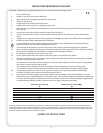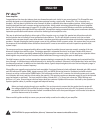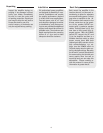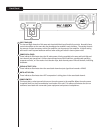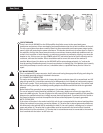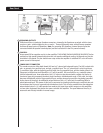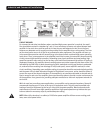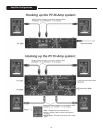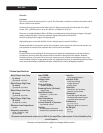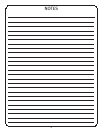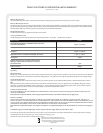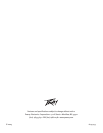
15
Rated Power Low Freq:
(4 ohms)
930 watts @ .1% T.H.D.
Rated Power High Freq:
(4 ohms)
350 watts @ .15% T.H.D.
Rated Power Low Freq:
(8 ohms)
575 watts @ .05% T.H.D.
Rated Power High Freq:
(8 ohms)
210 watts @ .1% T.H.D.
Minimum Load Impedance:
4 ohms
Frequency response:
20 Hz - 50 kHz; +0, -3dB
at rated output
Input CMRR:
>-55 dB @ 1 kHz
Voltage Gain:
x40 (32 dB)
Hum and Noise:
>-98 dB unweighted
Damping Factor (8 ohms):
>300:1@ 1 kHz
Input Sensitivity:
1.38 volts +/- 3% for 4 ohm
rated power
Input Impedance:
15 k ohms, balanced
Current Draw @ 1/8 power:
1,000 wats @ 4 ohms
Cooling:
One back panel temperature
dependant two speed 80 mm DC fan
Controls:
2 front panel attenuators
Indicator LEDs:
2 DDT (clip limiting)
2 Signal presence
2 Active status
Protection:
Thermal, DC, turn-on bursts,
subsonic, incorrect loads
Connectors:
Combi XLR input & XLR patch
Two Speakon® speaker outputs
15 amp IEC mains connector
Dimensions:
3.5" x 19" x 15.5"
(8.89 cm x 48.26 cm x 38.0 cm)
Net Weight:
39 lbs
(17.7 kg)
PV1600 Specifications
Features and specifications subject to change without notice.
All power measurements made at 120 VAC at the amplifier. 4 ohm power is time limited by the
circuit breaker.
Tech Info
Tech info:
Crossover
The electro-acoustic crossover point is 1.5 kHz. The nal slope is 24 dB per octave for the woofer and 18
dB per octave for the tweeter.
Infrasonic ltering is present at the initial rate of 12 dB per octave, and at the nal rate of 24 dB per
octave. (The -3 dB lter point is at 40 Hz, and the -10 dB point is at 26 Hz.)
There are no multiple-feedback lters. All lters are implemented using simple gain stages, unity gain
buffers, and passive lter circuits for maximum signal clarity and sonic precision.
No lter ringing, all lter stages critically damped.
High quality parts are used in the lter circuits. All poly caps are used in the lters.
Response tailored to the acoustic output of the speakers, so the sum of the electrical and acoustic out-
puts provides an acoustic total response that is more precise and stable.
Bi-amping:
Bi-amplication is the splitting of the full range sound signal into high frequency and low frequency
components, similar to what the passive internal crossover is doing inside the speaker. However,
bi-amping is done at line level via an electronic crossover circuit and fed to two separate power amp
channels. When using full range speakers with a bi-amplication option, bi-amplication often provides
more actual sound output capability and better reliability than merely bridging an amplier.



